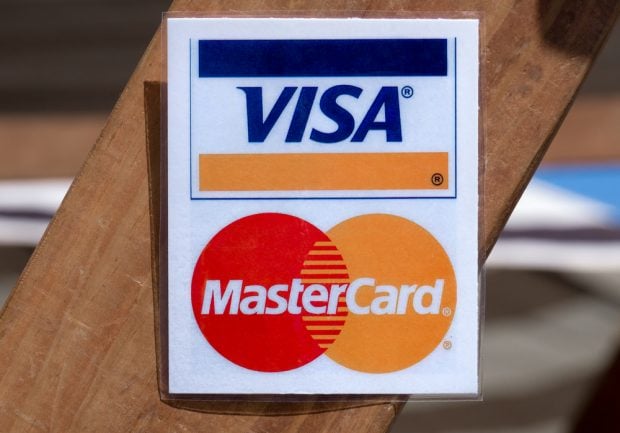Card security technology in the U.S. is like a spinning roulettewheel. No one knows exactly where the ball will land.
|Visa recently published plans to encourage U.S. retailers toshift to terminals that support new forms of payment including EMVor Europay-MasterCard-Visa-integrated circuit cards. Theseterminals, which are widely used in Europe, Asia and other regions,allow consumers to make payments using credit, debit and prepaidcards. The Visa plan also calls for the new terminals to supportpayments made via mobile phones.
|The current difference in terminal technologies across the globeis based on each region's deployment of telecommunicationsnetworks. Real-time authentication of a cardholder requires accessto inexpensive telecommunications networks, which the U.S. has hadfor many years.
|In contrast, Europe and Asia were hampered by some of the mostexpensive telecommunication networks in the world. To work aroundthis challenge, chip card payment systems were developed soauthentication could be performed offline. As it turns out, the EMVchip is a robust technology that not only delivers offlineauthentication, but also stored value, multiple applications in asingle environment, contactless payments and the ability to do awaywith a card form factor altogether.
|Visa is now pushing for U.S. implementation of chip technologyand cites increased security as the reason. The company said itwill let merchants that switch to EMV readers forego annual PaymentCard Industry security certifications. Visa has also announced thatin 2015, it will require merchants to reimburse issuers for sometypes of credit card fraud, which can be prevented by using EMVcapable terminals. It should be noted that EMV chips can reducecounterfeiting schemes, however, they do not preventcard-not-present fraud.
|Key Drivers for Conversion.
|A key driver of card payment conversion in the U.S. is the needfor consensus on a card security technology. For example, whilesome fast food and convenience store chains have embracedcontactless cards, it remains a very small share of the market.Converting to EMV terminals is going to require a major investmentby merchants and justifying that expense requires a standardized,scalable technology. The acceptance environment is looking for astable, long term solution that will not require re-investment dueto additional changes in requirements.
|Will merchants invest in EMV terminals? What about consumer andmerchant support for mobile contactless payments? Will there be aclear choice or will the marketplace demand flexible terminals thatsupport both technologies?
|The U.S. market currently appears to be in a wait and see stanceabout Visa's newly issued rules. This is a classic chicken and eggdilemma. Issuers want to provide modern plastics that meet consumerdemand for the convenience offered by EMV and contactlesstechnologies. However, the utility of these new acceptance formsdepends upon merchants making a major investment to upgradeterminals so they can process these payments, while the large U.S.issuers squeezed by the consequences of the Durbin Amendmentreducing debit interchange evaluate the value proposition of EMVcards.
|EMV Cards Offer Benefits for Overseas Travel. Because of thelack of a dominant technology, it is important that credit unionsare engaged and educated about the functionality and riskmanagement benefits of each platform. Before you initiatewidespread portfolio changes, assess your membership's card usageand then offer EMV or contactless cards to targeted members. Thevast majority of overseas terminals will accept standard magneticstripe cards. However, there are situations where unattendedterminals and kiosks associated with public transit, parkingfacilities and ATMs require chip cards for transacting.
|EMV cards offer full functionality for members who traveloutside the U.S. Credit unions that promote their ability toprovide EMV cards can position themselves as current and relevantin today's market. To address the needs of overseas travelers,credit unions can also issue prepaid EMV cards that are funded withdebit or credit cards.
|For members who live and work overseas, EMV credit or debitcards are a much better fit. We encourage credit unions to promoteEMV cards to their government, military or professional members whospend significant time abroad. It demonstrates the credit union'sability to support new technology and serve members' needs.
|It's also important to align your portfolio to take advantage ofmobile payment opportunities by targeting heavy debit card userswith a mobile debit card.
|Take a Proactive Approach to Gain MarketShare.
|Credit unions need to watch the roulette wheel as it spins sothey can take action when the time is right. Any change intechnology represents an opportunity to build market share. Creditunions can evaluate their membership and design plans to roll outnew cards. Then, when the timing is right, they can be first tomarket with cards that both meet consumer demand and demonstratetechnology leadership.
|Mike Kelly is president/CEO of PSCU Financial Services.Contact 727-571-4656 or [email protected]
Complete your profile to continue reading and get FREE access to CUTimes.com, part of your ALM digital membership.
Your access to unlimited CUTimes.com content isn’t changing.
Once you are an ALM digital member, you’ll receive:
- Critical CUTimes.com information including comprehensive product and service provider listings via the Marketplace Directory, CU Careers, resources from industry leaders, webcasts, and breaking news, analysis and more with our informative Newsletters.
- Exclusive discounts on ALM and CU Times events.
- Access to other award-winning ALM websites including Law.com and GlobeSt.com.
Already have an account? Sign In
© 2024 ALM Global, LLC, All Rights Reserved. Request academic re-use from www.copyright.com. All other uses, submit a request to [email protected]. For more information visit Asset & Logo Licensing.









